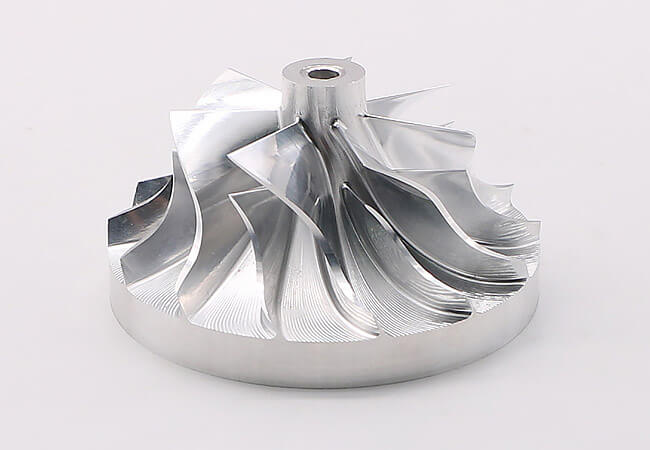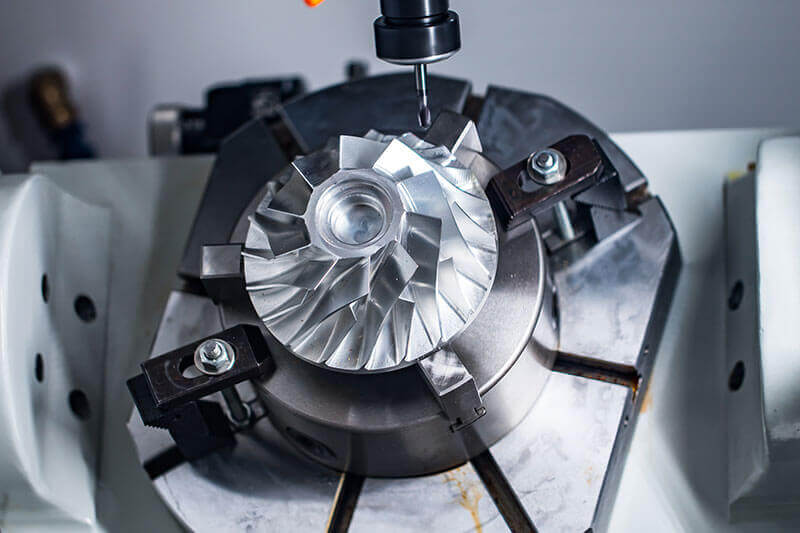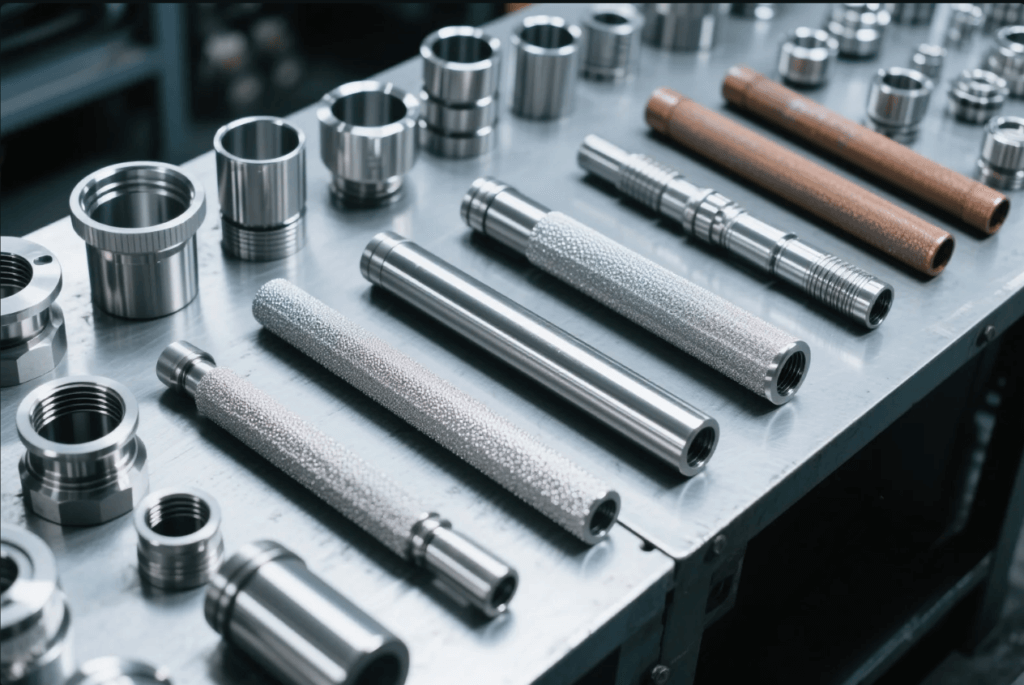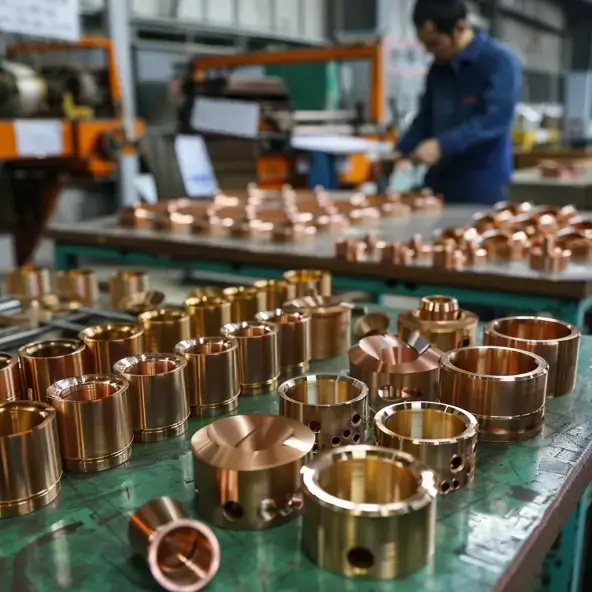How to CNC Machine Aluminum: The Ultimate Manufacturing Guide
Aluminum CNC machining has revolutionized modern manufacturing, offering unparalleled precision for creating complex, lightweight components. As one of the most versatile machining processes, it combines aluminum’s excellent material properties with computer-controlled accuracy to produce parts for aerospace, automotive, electronics, and countless other industries.
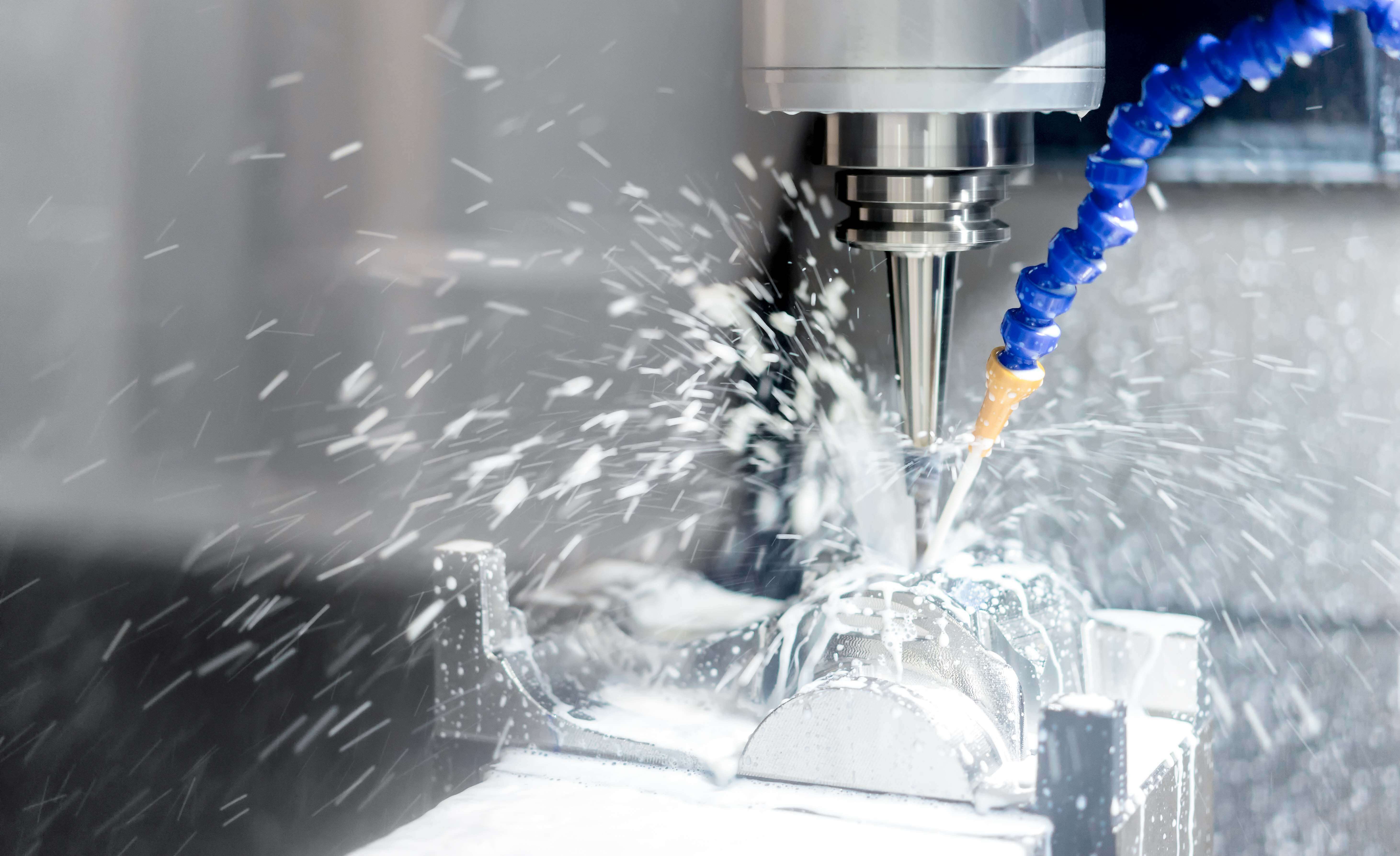
5-axis CNC machine creating precision aluminum components with complex geometries
What is CNC Machine Aluminum?
CNC machining aluminum refers to the computer-controlled process of precisely shaping aluminum parts by removing material from solid blocks or billets. Unlike manual machining, this automated process delivers exceptional repeatability and accuracy, typically achieving tolerances within ±0.001 inches (±0.025mm). The technology enables manufacturers to produce everything from simple brackets to intricate heat sinks with complex cooling channels.
What makes aluminum particularly suitable for CNC machining is its unique combination of properties. Not only is it lightweight and corrosion-resistant, but its excellent thermal conductivity helps dissipate heat during machining. Furthermore, most aluminum alloys offer superb machinability, allowing for faster cutting speeds than steel or titanium.
How CNC Machine Aluminum Works
The aluminum CNC machining process begins with a detailed 3D CAD model that gets converted into machine instructions (G-code). These digital commands guide the cutting tools through precise movements to sculpt the raw material into finished parts. Modern CNC systems can simultaneously control multiple axes of motion, enabling the creation of complex contours and features in a single setup.
Key Components of Aluminum CNC Systems:
- Control Unit: The computer that interprets CAD files and controls machine movements
- Cutting Tools: Specialized end mills, drills, and inserts designed for aluminum
- Workholding: Vises, clamps, or fixtures that secure the aluminum workpiece
- Coolant System: Delivers cutting fluid to manage heat and chip removal
- Axis Motors: Precisely position the cutting tool relative to the workpiece
CNC Machining Aluminum Process
Aluminum undergoes various CNC machining processes depending on part requirements. Each method offers distinct advantages for different geometries and production volumes.
1. CNC Milling
Rotating cutting tools remove material while the workpiece remains stationary. Ideal for:
- Complex 3D contours
- Pockets and slots
- Flat surfaces
- Precision edges
2. CNC Turning
The workpiece rotates while stationary tools shape cylindrical parts. Perfect for:
- Shafts and rods
- Bushings and bearings
- Threaded components
- Concentric features
3. 5-Axis Machining
Simultaneous movement across five axes enables complex geometries. Used for:
- Aerospace components
- Turbine blades
- Medical implants
- Complex prototypes
4. CNC Drilling
Creates precise holes with excellent diameter control. Essential for:
- Mounting holes
- Fastener patterns
- Cooling channels
- Fluid passages
5. CNC Grinding
Abrasive wheels achieve ultra-precise dimensions and finishes. Critical for:
- High-tolerance surfaces
- Optical-quality finishes
- Precision bearing seats
- Wear-resistant surfaces
6. CNC Boring
Enlarges and perfects existing holes with extreme accuracy. Necessary for:
- Engine cylinders
- Hydraulic components
- Precision bushings
- Large diameter bores
Aluminum Processing Post-processing
After CNC machining, aluminum parts often require additional treatments to enhance functionality and appearance.
1. Deburr
Removes sharp edges and microscopic burrs left from machining using:
- Manual filing and sanding
- Vibratory tumbling
- Thermal energy method
- Cryogenic deflashing
2. Anodic Oxidation
Electrochemical process that creates a durable, corrosion-resistant oxide layer:
- Type II (standard) – 0.0005-0.001″ thick
- Type III (hard coat) – 0.002-0.003″ thick
- Accepts dyes for colored finishes
- Improves surface hardness
3. Heat Treatment
Alters material properties through controlled heating and cooling:
- T4 – Solution heat treated and naturally aged
- T6 – Solution heat treated and artificially aged
- O – Annealed for maximum softness
- Increases strength up to 30%
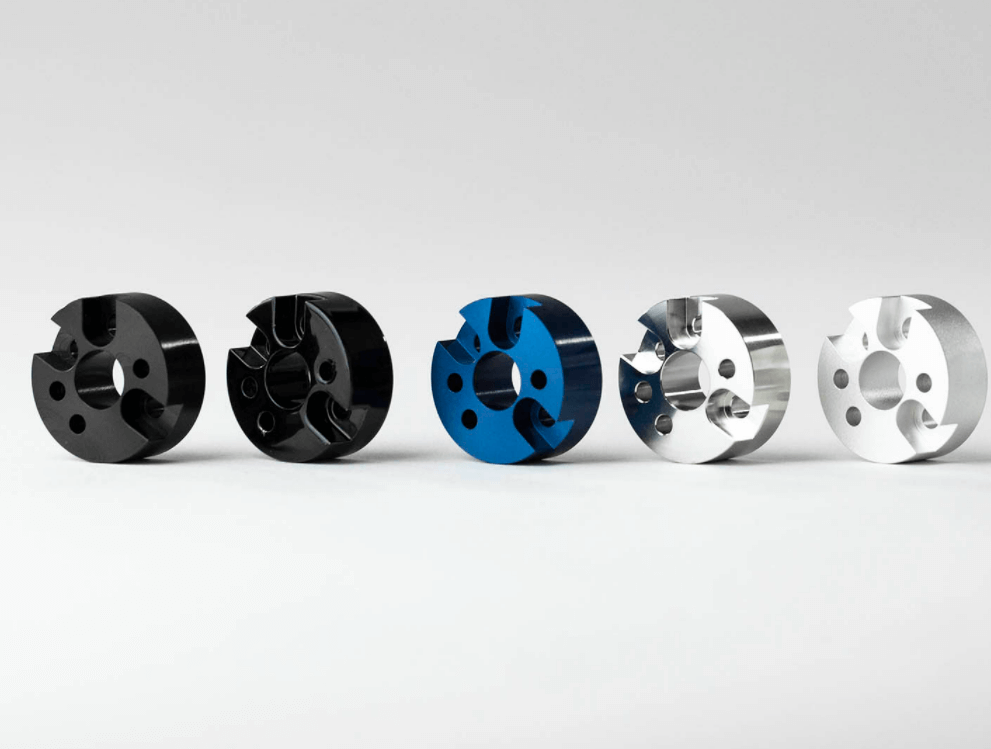
Comparison of different aluminum surface treatments showing color and texture options
4. Sandblasting
Abrasive particles create uniform matte surfaces by:
- Using glass beads for soft finishes
- Applying aluminum oxide for aggressive texturing
- Controlling surface roughness (Ra 1-10μm)
- Preparing surfaces for painting
5. Powder Coating
Electrostatically applied polymer coating offers:
- Durable, chip-resistant finishes
- Virtually unlimited color options
- Thicknesses from 0.002-0.005″
- Excellent UV resistance
6. Polishing
Mechanical abrasion creates reflective surfaces through:
- Coarse to fine abrasive progression
- Buffing with compound-loaded wheels
- Electropolishing for micro-smoothing
- Achieving mirror-like finishes
7. Electrolytic Polishing
Electrochemical process that:
- Removes microscopic surface peaks
- Reduces surface roughness by 50-80%
- Improves corrosion resistance
- Cleans and deburrs simultaneously
8. Surface Coating
Specialized coatings enhance performance:
- PTFE coatings for low friction
- Ceramic coatings for heat resistance
- Conductive coatings for EMI shielding
- Wear-resistant coatings for high-abrasion applications
CNC Machining Aluminum Surface Treatment
Selecting the proper surface treatment depends on the part’s functional requirements and aesthetic goals. While anodizing works well for decorative components in consumer electronics, hard coat anodizing better suits aerospace applications needing wear resistance. Similarly, powder coating provides durable finishes for outdoor equipment, while electropolishing offers ultra-clean surfaces for medical devices.
| Treatment | Thickness | Hardness | Best Applications |
|---|---|---|---|
| Type II Anodizing | 0.0005-0.001″ | 300-500 HV | Consumer products, electronics |
| Type III Anodizing | 0.002-0.003″ | 500-700 HV | Aerospace, military |
| Powder Coating | 0.002-0.005″ | 3-4H pencil | Outdoor equipment, automotive |
| Electropolishing | Removes 0.0001-0.001″ | No change | Medical, food processing |
Which Aluminum Materials Are Suitable for CNC Machining?
While most aluminum alloys can be CNC machined, certain grades offer better machinability and performance for specific applications:
- 6061-T6: The most versatile general-purpose alloy with excellent strength and machinability
- 7075-T6: Aerospace-grade alloy with the highest strength (comparable to many steels)
- 2024-T3: Excellent fatigue resistance for structural aircraft components
- 6063: Superior surface finish quality for architectural applications
- 5052-H32: Outstanding corrosion resistance for marine environments
- 6082: European equivalent to 6061 with slightly better machinability
- MIC-6: Precision ground cast plate for stable machining of flat parts
What is the Most Commonly Used Aluminum Alloy?
6061 aluminum dominates as the most widely used alloy for CNC machining due to its exceptional balance of properties. In its T6 temper condition, it offers a tensile strength of 45 ksi (310 MPa) while maintaining good ductility. The alloy’s excellent weldability allows for post-machining assembly, and its corrosion resistance suits both indoor and outdoor applications.
What truly sets 6061 apart is its machinability. The alloy produces clean chips that break easily, preventing built-up edge on cutting tools. This characteristic enables higher cutting speeds and longer tool life compared to many other metals. Additionally, 6061 responds well to all common surface treatments, from anodizing to powder coating.
What Are the Applications for CNC Machined Aluminum?
CNC machined aluminum components serve critical functions across virtually every industry sector:
Aerospace
- Aircraft structural components
- Engine mounts
- Landing gear parts
- Avionics enclosures
Automotive
- Engine blocks and heads
- Suspension components
- Transmission housings
- Wheel spacers
Electronics
- Heat sinks
- Device enclosures
- RF shielding
- Connector housings
Medical
- Surgical instruments
- Implant components
- Diagnostic equipment
- Prosthetic devices
What Are the Pros and Cons of CNC Machining Aluminum?
Advantages of CNC Machining Aluminum:
- Lightweight: About 1/3 the weight of steel with comparable strength
- Excellent Machinability: Faster cutting speeds reduce production time
- Corrosion Resistance: Natural oxide layer prevents rust
- Thermal Conductivity: Ideal for heat dissipation applications
- Surface Finish Options: Accepts all common finishing processes
- Recyclability: 100% recyclable with no quality loss
Disadvantages of CNC Machining Aluminum:
- Softer Than Steel: More prone to wear in high-friction applications
- Thermal Expansion: Higher coefficient can affect tight tolerances
- Material Cost: More expensive than some plastics and mild steel
- Galling Tendency: Can adhere to cutting tools if parameters aren’t optimized
Is CNC Machined Aluminum Expensive?
The cost of CNC machined aluminum parts depends on several interrelated factors. While aluminum itself costs more than mild steel (typically $2-5/lb versus $0.50-1/lb), its superior machinability often results in lower overall production costs. The ability to machine aluminum 3-5 times faster than steel significantly reduces labor costs, especially for complex parts.
Other cost factors include:
- Part Complexity: Intricate designs with tight tolerances increase machining time
- Quantity: Higher volumes reduce per-unit costs through amortized setup
- Material Grade: 6061 is most economical, while 7075 costs 20-30% more
- Surface Treatments: Anodizing adds $5-20 per part, powder coating $10-30
- Secondary Operations: Additional processes like heat treatment increase cost
For prototyping and low-volume production, CNC machining aluminum offers excellent value. While not as inexpensive as injection molding for mass production, it provides superior dimensional accuracy and material properties for critical applications.
Conclusion
CNC machining aluminum provides manufacturers with an extremely versatile process for creating high-quality, precision parts. By understanding the various machining processes, material options, and post-processing treatments available, engineers can optimize their designs for both performance and cost-effectiveness. Whether producing simple brackets or complex aerospace components, aluminum CNC machining delivers the perfect balance of strength, weight, and manufacturability.


